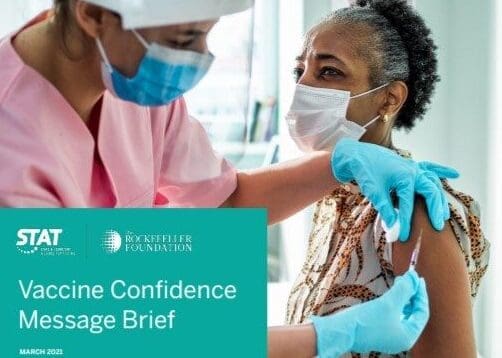Among the previously mundane routines that have taken on a new level of anxiety during the pandemic, one rises to the top: going to the dentist. There are few other instances when we’re asked to temporarily put aside our instinct for social distancing and mask wearing so directly and in such close quarters.
There are few people who feel this anxiety more acutely than dental hygienists, for whom “droplets” are a fact of life. So you’d think they’d be more motivated than anyone to line up for a Covid-19 vaccine as soon as their number was called.
Enter Julia*. A dental hygienist from Texas, Julia says she’s not ready to get the vaccine. And it’s not because she doesn’t take Covid-19 seriously. In fact, it’s just the opposite. Julia has established such a steady self-protective routine at work that she doesn’t feel the vaccine is worth the risk of the side effects it may bring with it.
Julia was a participant in a recent series of focus groups we conducted with health care workers, frontline workers, and K-12 teachers who can’t decide if they want to get vaccinated or not.
“I wear two masks,” Julia said. “When I come home, I don’t touch my son until I disinfect myself. What I’m doing right now is working for me. I don’t want to mess with that. I’ll try and stick it out.”
Like many of our participants, Julia challenges us to rethink our stereotypes of vaccine skeptics. Rather than being careless and irresponsible, her self-protective routine is nothing short of fastidious (she is a dental hygienist, after all). In fact, it’s precisely because her routine feels like such a safe bet that the vaccines by contrast feel like a risky gamble.
Just as these focus group conversations challenged us to re-think vaccine skepticism, so too do they challenge us to rethink our vaccine messages. Today, we’re releasing a Vaccine Confidence Message Brief, drawing on both our focus groups and a nationally representative survey. The Message Brief includes surprising audience insights, such as:
Conflicting messages have made people cautious. People remember the inconsistent guidance at the start of the pandemic, such as when and how to wear a mask. This has primed them to distrust grand proclamations about how safe and effective vaccines will be.
People don’t want to abandon or replace the self-protection measures they’ve acquired over the last year. Like Julia, many of the participants we spoke to have acquired a tremendous sense of control over their pandemic lives. They see vaccines as a “leap of faith” they’re not ready to make.
Dwelling on safety concerns can be a communications rabbit hole. People are worried that the speed of vaccine development leaves the long-term effects unknowable. But pointing to trial data only fuels their anxiety that the trials were too quick. While we should be clear and direct about the safety of vaccines, we should quickly pivot to their benefits.
These surprising insights also lead to message guidance that can help change the conversation. Rather than talking down to vaccine skeptics or assuming they can’t be reasoned with, we should:
Frame vaccines as an empowering tool—not an ultimatum. Emphasize that vaccines are an additional powerful tool to wield against the virus. Framing vaccines on a continuum allows people to see it as an extension of the things they’ve been doing for a year, and positions vaccination as an informed choice rather than a mandate.
Emphasize the “benefits” side of the risk-benefit equation. Messages focusing solely on safety can reinforce people’s concerns, as they end up dwelling more on what they’re already anxious about. Be clear and direct about the safety of the vaccines—but quickly pivot to the benefits of being vaccinated. Regularly promote any new CDC guidance on what vaccinated people can safely do.
Don’t assume your audience is “hesitant” when they may just lack access. There is a common misperception that Black and Brown communities are disproportionately skeptical of the vaccine. But in our research, Black and Latinx respondents had the same top concerns as white respondents: that the vaccine was created too quickly and that it may have significant side effects. A concern that is more significant among communities of color, however, is access: they need to see, hear and believe that they’ll be able to access vaccines through a place and provider they trust.
This research is far from the final word on building vaccine confidence. As the vaccine supply increases and more people become eligible, new trends and developments will require updates to our communications. But we believe the insights and ideas above can help shift the conversation, by shifting our understanding of what’s standing in the way of vaccine confidence.
Related Updates

Vaccine Confidence Message Brief
In order to get Americans vaccinated quickly, we need to understand the motivations and hesitations behind getting vaccinated. We are launching the Vaccine Confidence Message Brief to explore what motivates high-priority audiences to get the Covid-19 vaccine. We conducted both a national message testing study and focus groups among people expressing concerns about getting the […]
More